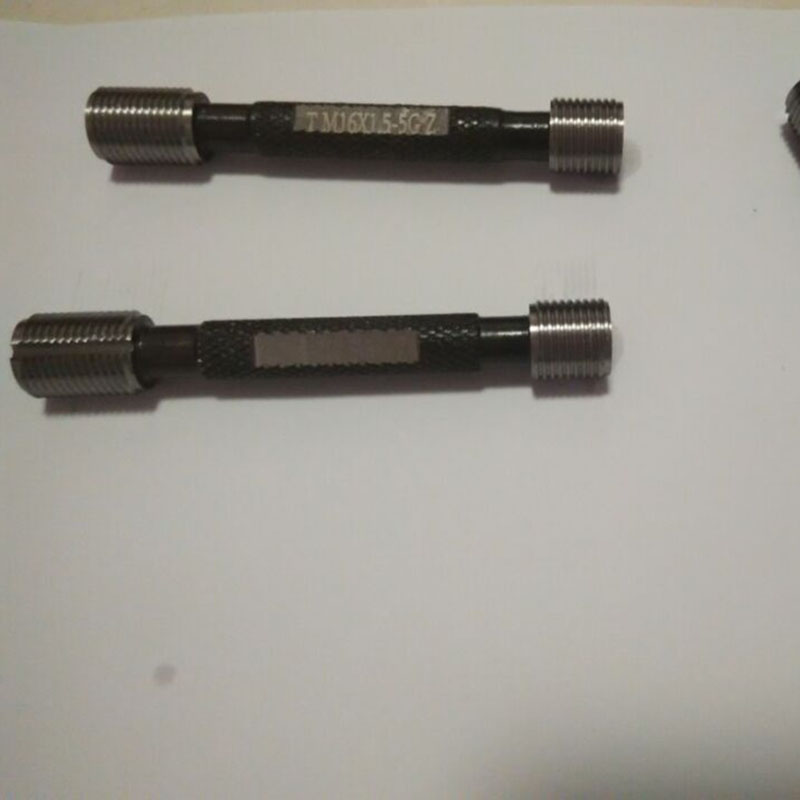Dek . 21, 2024 21:00 Back to list
ring gauge is used for checking
Understanding the Ring Gauge A Key Tool for Precision Measurement
In the world of manufacturing and engineering, precision is crucial. One of the essential tools used for ensuring precision in cylindrical parts is the ring gauge. This specialized measuring instrument plays an integral role in quality control, particularly in the production of items that require exact specifications, such as shafts, bearings, and other machined components.
What is a Ring Gauge?
A ring gauge is a cylindrical device that is used primarily for checking the external diameter of cylindrical workpieces. It typically comes in two forms the go gauge and the no-go gauge. The go gauge is designed to fit onto a part that meets the required specifications, while the no-go gauge should not fit onto the part if it exceeds the acceptable limits. This dual functionality helps manufacturers ensure that each component meets the necessary dimensional tolerances.
The Importance of Ring Gauges
Accurate measurements are critical in manufacturing processes, and any deviation from specified dimensions can lead to failures or malfunctions in machinery. This is where the ring gauge proves indispensable. By employing these gauges, inspectors can quickly and efficiently determine whether a part is within tolerances without the need for cumbersome micrometers or calipers. This not only speeds up the inspection process but also increases accuracy.
Furthermore, using ring gauges can minimize human error in measurement since they provide a clear pass or fail outcome. This reliability is paramount in environments where precision is non-negotiable, such as aerospace, automotive, and medical equipment manufacturing.
Types of Ring Gauges
Ring gauges can be classified based on their design and functionality
. The most common types includering gauge is used for checking

1. Go and No-Go Ring Gauges As mentioned earlier, these gauges are used together to assess whether a part falls within the acceptable specifications.
2. Master Ring Gauges These are high-precision gauges used to calibrate other measuring instruments. They serve as a benchmark against which other gauges are measured.
3. Limit Gauges These gauges are used in specific situations where only one measurement is critical, allowing for quick assessments without the need for extensive measurements.
4. Snap Gauges Although not strictly a ring gauge, snap gauges closely resemble ring gauges and are used for measuring the thickness or overall dimensions of a component.
The Process of Checking with a Ring Gauge
The procedure for using a ring gauge is straightforward. The inspector begins by selecting the appropriate gauge based on the part in question. First, the go gauge is placed over the component; if it fits snugly, the part is within the acceptable range. Following this, the no-go gauge is tested. If the no-go gauge fits, the part is deemed out of specification. This simple two-step process allows for rapid assessments of many components in a production line.
Conclusion
In conclusion, ring gauges are invaluable tools in the sphere of precision measurement. Their simplicity, efficiency, and reliability make them essential for maintaining quality standards in manufacturing processes. By ensuring that components meet exact specifications, ring gauges help prevent costly errors and defects, ultimately contributing to the overall success of manufacturing operations. As industries continue to emphasize the need for precision, the role of ring gauges will remain pivotal in ensuring product integrity and performance.
-
Why Metric Trapezoidal Thread is Ideal for Precision Motion ControlNewsAug.05,2025
-
The Unique Properties of a Block of Granite for Industrial UseNewsAug.05,2025
-
The Role of Flanged Y Strainers in Preventing Pipeline ClogsNewsAug.05,2025
-
The Importance of Regular Calibration for Master Ring GagesNewsAug.05,2025
-
How a Cast Iron Surface Table Enhances Accuracy in ManufacturingNewsAug.05,2025
-
Comparing Different Check Valve Types for Optimal Flow ControlNewsAug.05,2025
Related PRODUCTS









